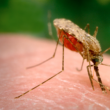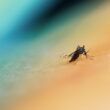Combatting pathogens through ethics education
By Louise Bezuidenhout, Chandre Gould, April 8, 2014
Pathogens do not respect borders. Efforts to control outbreaks of disease—including those caused by emerging pathogens, whether natural or manmade—require that local and national responses be synchronized and that mechanisms for international cooperation be established. At both the national and international levels, scientists play an important role.
Scientists, because of their engagement with pathogens in daily research and their immersion in the literature that surrounds them, are well positioned to act as an early warning system for disease outbreaks. Their involvement in, and endorsement of, measures for biosafety, biosecurity, and dual-use control are vital to confronting the threats posed by emerging pathogens. ("Biosafety," in simple terms, refers to preventing unintentional exposure to pathogens, or their unintentional release. "Biosecurity" means protecting pathogens from theft, loss, or diversion. "Dual-use" research is legitimate research that could be misused to threaten public health or national security.)
In their role as a first line of defense, scientists often find themselves enthusiastically embraced by those who care about pathogen control. But serious questions surround the education that scientists receive in the ethics of biosafety, biosecurity, and dual-use research, and in associated standards for responsibility, professionalism, and good conduct. Ethics education often fails to prepare scientists to meet the expectations that are placed on them, and indeed numerous studies indicate that ethics education, on a global level, remains patchy and unstandardized. Until international ethics education becomes more comprehensive, it is difficult to see how scientists can be cast with real confidence as first-line defenders.
Ethics education for scientists must be focused so that scientists can see value in the topics under discussion—that is, ethics education requires buy-in from the scientists. Without buy-in, ethics education can aspire to little more than providing scientists with information about the risks associated with biosafety, biosecurity, and dual-use issues. It cannot encourage scientists to engage in critical reflection about the misuse of research and to practice ethical decision making.
Getting buy-in from scientists is not so difficult when it comes to biosafety. The biosafety risks associated with research, and scientists' responsibility to address these risks, are a fairly straightforward and generally manageable element of the ethics curriculum. But making scientists properly aware of security risks—whether these risks fall into the biosecurity or the dual-use category—is a far more complicated process. Scientists often perceive these risks as quite removed from their daily research practices (and in most cases there is little that scientists can actually do to reduce the risk that their work will be misused). If scientists are presented with responsibility for reducing risks that they perceive as unfounded, the efficacy of ethics education can be severely undermined. Thus ethics education must walk a fine line—encouraging ethical decision making and critical reflection without exaggerating the security risks inherent in research.
Low- and middle-income countries often suffer from a persistent lack of formalized ethics education. The majority of the ethics education that scientists receive in these nations is made available because funding requirements or collaboration agreements require that it be provided (or else it comes in the form of online courses). Scientists therefore receive ethics education that is highly generalized—or, if specific, is specific to the research context of a high-income country. These decontextualized ethics initiatives often discuss types of research that are outside the national research remit of low- or middle-income countries—and scientists often struggle to see the point in discussing risks that fall outside their frames of reference. Moreover, highly visible problems such as poor health care provision may overshadow security concerns in low- or middle-income countries, further complicating ethics education.
Another problem facing education initiatives in low- and middle-income countries is that these nations do not have, nor are they likely to develop soon, comprehensive structures allowing scientists to report concerns about biosafety, biosecurity, and dual-use issues. Such structures in wealthier nations may not be perfect, and they remain the subject of considerable discussion, but they do exist. So those involved in ethics education must be very careful not to present developing-world scientists with responsibilities that they have no way of fulfilling. Initiatives in ethics education must strike the right balance between responsibility and risk; otherwise, scientists will see biosecurity and dual-use issues as simply not pertinent to their research.
An important step toward confronting the threat of emerging pathogens is to develop improved educational approaches for life science ethics. As such approaches are developed, it must be continually reiterated that one size cannot fit all—any successful model for ethics education must contend with issues such as the cultural environment in which the model is to be applied and the practicalities of specific research environments. (Then again, the international harmonization of ethics education is an important issue in its own right.) Until ethics education can overcome such challenges, it will be very difficult to establish an international community of scientists—scientists appropriately aware of biosafety, biosecurity, and dual-use issues—who truly can act as a united first line of defense against emerging pathogens.
Topics: Biosecurity
Share: [addthis tool="addthis_inline_share_toolbox"]














